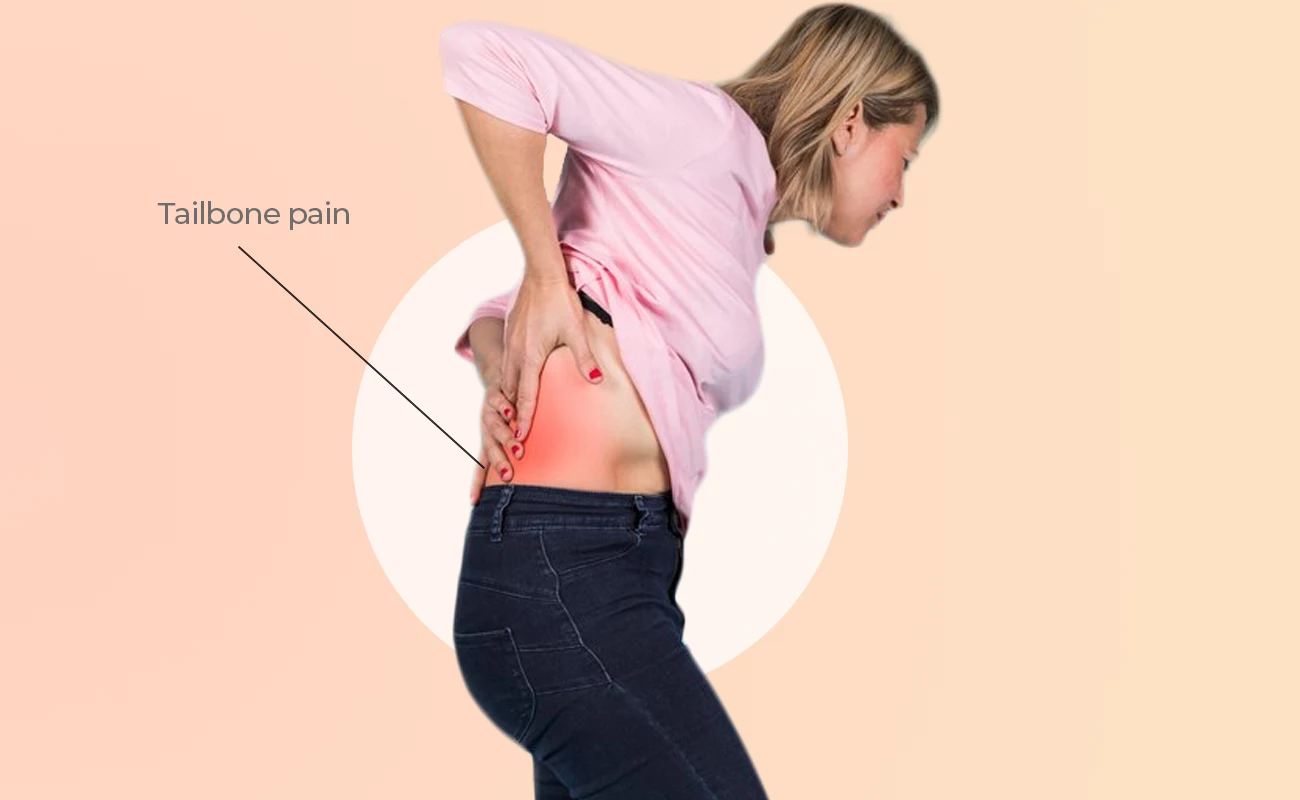
Tailbone pain Coccydynia Physiotherapy
A coccyx injury results in pain and discomfort in the tailbone area (the condition is called coccydynia). Inflammation of the tailbone (coccyx or bony area located deep between the buttocks above the anus) is referred to as coccydynia. Tailbone Coccydynia is associated with pain and tenderness at the tip of the tailbone between the buttocks. Sitting often worsens coccyx pain. These injuries may result in a bruise, dislocation, or fracture (break) of the coccyx. Injuries of people falling on ice in 2016: With slick sidewalks and driveways, some of us will have the unfortunate experience of a slip and fall on ice this winter that can cause injury to your neck or back.
Types of injuries:
- Muscle sprains and ligament strains
- Fractures, including spinal compression fractures
- Broken bones – most commonly the wrists and hips
- Back injuries and pain
- Concussions and other head injuries
- A fall onto the tailbone in the seated position, usually against a hard surface, is the most common cause of coccyx injuries.
- A direct blow to the tailbone, such as those that occur during contact sports, can injure the coccyx.
- The coccyx can be injured or fractured during childbirth.
- Repetitive straining or friction against the coccyx (as happens in bicycling or rowing) can injure the coccyx.
- Too much mobility can also pull the pelvic floor muscles that attach to the coccyx, resulting in tailbone and pelvic pain.
- Limited coccyx movement may also result in pelvic floor muscle tension, adding to discomfort.
- Repetitive stress. Activities that put prolonged pressure on the tailbone, such as horseback riding and sitting on hard surfaces for long periods of time, may cause the onset of coccyx pain.
- Childbirth. During delivery, the baby’s head passes over the top of the coccyx, and the pressure against the coccyx can sometimes result in injury.
- Referred coccyx pain. In rare cases pain will be referred to the coccyx from elsewhere in the spine or pelvis, such as a lumbar herniated disc or degenerative lumbar disc.
- Obesity: One study found that a Body Mass Index (BMI) of more than 27.4 in women and 29.4 in men increases the risk for coccydynia following repetitive stress or a one-time injury.
- Most injuries from slips and falls are caused by the twisting and wrenching of our backs as we try to catch ourselves during our fall. These injuries usually heal with time and rest, but be watchful for more serious symptoms.
Tailbone Injury or Tailbone Pain Coccydynia Symptoms
- Severe localized pain and tenderness may be felt in the tailbone area.
- If the injury is traumatic, a bruise may be visible in this area.
- The pain is generally worse when sitting for prolonged periods of time, or with direct pressure to the tailbone area.
- Bowel movements and straining are often painful.
- Some women may experience pain during sexual intercourse.
Preventing Injuries from Slipping On Ice
- According to the Center for Disease Control, falls were the leading cause of injury in older Americans in 2016. Winter weather conditions certainly increase the likelihood that such an accident can occur.
- Wearing proper footwear for the conditions you will encounter
- Taking short steps
- Slowing your pace when walking on icy surfaces
- Sprinkling deicer or sand on icy patches
- Carrying a cell phone with you in case you are injured
- Working slowly when performing outdoor chores in icy conditions
- Try to avoid carrying items, or walking with your hands in your pockets; this can reduce your ability to catch yourself if you lose your balance
These Boots are Made for Walking
The most effective way to prevent falling on the ice is to wear appropriate footwear. A good pair of snow boots not only helps keep your feet warm, but the rubber on the soles is often designed to provide more traction which help with solid footing in slick conditions. You should also adjust your gait and walking style for the icy conditions. Try taking shorter steps to start with and to land on as much of your foot as possible.
Exams and Tests
The cause of a coccyx injury is largely determined based on a medical history and a physical exam. Occasionally, X-rays are taken.
Patients with coccydynia are advised to use a well-padded seat when sitting and avoid long periods of sitting when possible. Rest, avoiding re-injury to the affected area, anti-inflammatory medications, and pain medications can relieve symptoms. Sitting on a pillow, cushion, or buttock support can help.
How does Physiotherapy work in coccydynia?
Initial treatment includes ergonomic adjustments such as using a donut-shaped pillow, lumbar roll or gel cushion when sitting for a long period of time. This reduces local pressure and improves the patient’s posture.
Mobilizations can be used to help realign the position of the coccyx.
Deep transverse frictions (DTF) massage around the spasm or tailbone area
Manipulation of the coccyx can be performed
Massage of the Levator Ani muscle and Coccygeus muscles has also been found to relieve pain.
Shortwave therapy was more effective and satisfactory in reducing discomfort and disability caused by coccydynia.
In 16% of the patients (Wray et al) daily ultrasound followed by two weeks of short-wave diathermy (no settings were given) was found beneficial. (Wray CC, Easom S, Hoskinson J. Coccydynia: aetiology and treatment. J Bone Joint Surg 1991;73(B):335-8.
Wu C, et al. The application of infrared thermography in the assessment of patients with coccygodynia before and after manual therapy combined with diathermy. J Manipulative Physio l Ther 2009:287-293.)
Piriformis and gluteus cross leg stretchIliopsoas and gluteal stretch (Pigeon Pose)
If you experience any of the following, or your pain lasts more than a few days, Call us now and book for an assessment. We can usually see the person in need on the same day you call.
- Difficulty breathing or standing
- Pain while sitting
- Pain radiating down your leg when trying to straighten your knee
- Risk factors such as osteoporosis
Physiotherapy Mississauga – Physio therapy clinic Near Me:
At Curezone Physiotherapy Clinic, we provide compassionate care and personalized treatment plans to help you overcome tailbone pain. Our goal is to rehabilitate and support you every step of the way on your journey. Schedule an appointment with us today and take the first step towards relief and recovery.
If you are suffering from tail bone pain and looking for the best physio in Mississauga or best physio Oakville, click below to book an appointment with our coccydynia physiotherapists.
Mississauga Physiotherapy:
Physiotherapy Clinic Mississauga – Curezone Physiotherapy, Heartland Mississauga.
Physiotherapy Clinic Erin Mills – Curezone Physiotherapy, Erin Mills Mississauga.
Oakville Physiotherapy:
Physiotherapy Clinic Oakville – Curezone Physiotherapy, Burloak Oakville.




